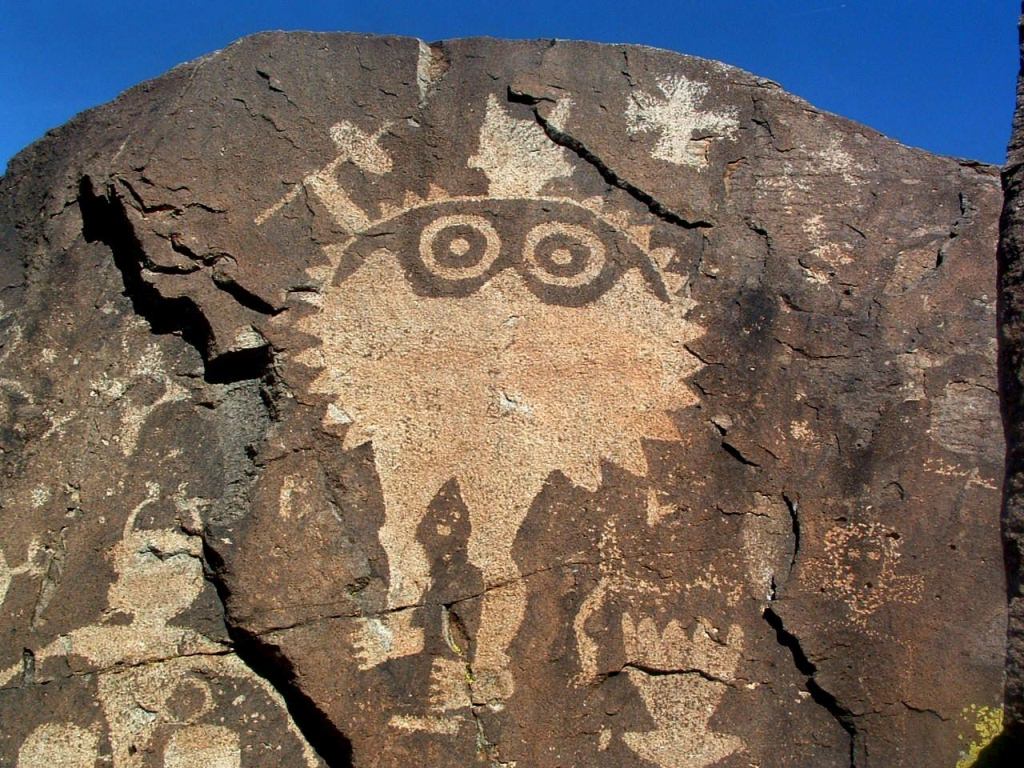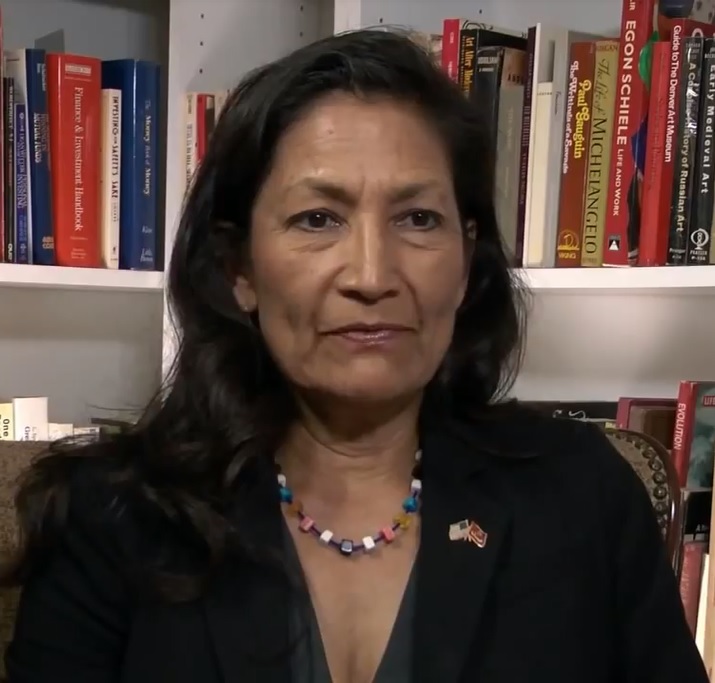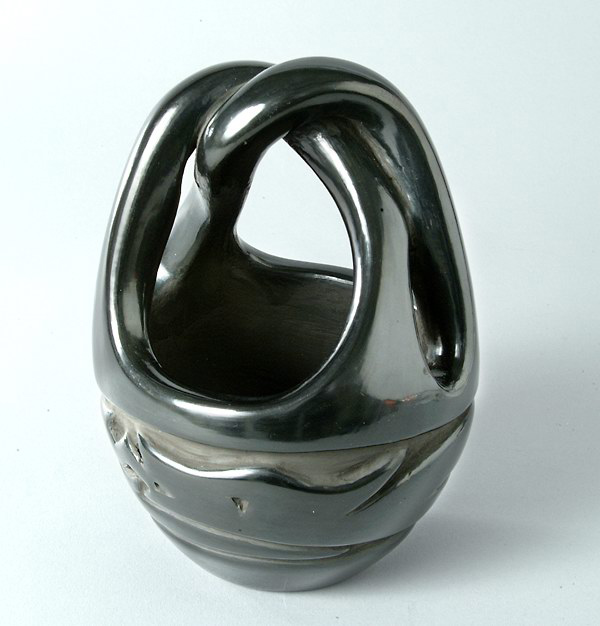|
Tewa
The Tewa are a linguistic group of Pueblo Native Americans who speak the Tewa language and share the Pueblo culture. Their homelands are on or near the Rio Grande in New Mexico north of Santa Fe. They comprise the following communities: * Nambé Pueblo * Pojoaque Pueblo * San Ildefonso Pueblo * Ohkay Owingeh * Santa Clara Pueblo. * Tesuque Pueblo The Hopi Tewa, descendants of those who fled the Second Pueblo Revolt of 1680–1692, live on the Hopi Reservation in Arizona, mostly in Tewa Village and Polacca on the First Mesa. Other Hopi clans are known to be descendants of Tewa people.J. Walter Fewkes, The Butterfly in Hopi Myth and Ritual. ''American Anthropologist'', New Series, Vol. 12, No. 4 (Oct. - Dec., 1910), pp. 576–594 Tewa is one of five Tanoan languages spoken by the Pueblo people of New Mexico. Though these five languages are closely related, speakers of one cannot fully understand speakers of another (similar to German and Dutch speakers). The six Te ... [...More Info...] [...Related Items...] OR: [Wikipedia] [Google] [Baidu] |
Hopi Tewa
The Hopi-Tewa (also Tano, Southern Tewa, Hano, Thano, or Arizona Tewa) are a Tewa Pueblo group that resides on the eastern part of the Hopi Reservation on or near First Mesa in northeastern Arizona. Synonymy The name ''Tano'' is a Spanish borrowing of an older Hopi-Tewa autonym ''tʰáánu tééwa''. ''Tano'' is often encountered in the anthropological literature referring to the ancestors of the Arizona Tewa before they relocated to Hopi territory. The name ''Hano'', similarly, is a borrowing of ''tʰáánu'' into Hopi as ''hááno'', ''háánòwɨ'', which was then Anglicized. ''Hano'' in English also refers to Tewa Village, one of the main Arizona Tewa settlements. Other historical names include ''Tamos'', ''Tamones'', ''Atmues'', ''Tanos'', ''Thanos'', ''Tagnos'', ''Janos''. ''Tewa'' is the preferred autonym (over ''Hano'', ''Tano'', and ''Hopi-Tewa'') because the Tewa language refers to its people as "Tewas." History The Hopi-Tewa are related to the Tewa communities livi ... [...More Info...] [...Related Items...] OR: [Wikipedia] [Google] [Baidu] |
Tewa Language
Tewa is a Tanoan language spoken by Pueblo people, mostly in the Rio Grande valley in New Mexico north of Santa Fe, and in Arizona. It is also known as Tano, or (archaic) Tée-wah. Dialects and usage The 1980 census counted 1,298 speakers, almost all of whom are bilingual in English. Each pueblo or reservation where it is spoken has a dialect: * Nambe Pueblo: 50 speakers (1980); 34 speakers (2004) * Pojoaque Pueblo: 25 speakers (1980) * San Ildefonso Pueblo (''P'ohwhóge Owingeh''): 349 speakers * Ohkay Owingeh: 495 speakers (1980) * Santa Clara Pueblo: 207 speakers (1980) * Tesuque Pueblo: 172 speakers (1980) As of 2012, Tewa is defined as "severely endangered" in New Mexico by UNESCO. In the names "Pojoaque" and "Tesuque", the element spelled "que" (pronounced something like in Tewa, or in English) is Tewa for "place". Tewa can be written with the Latin script; this is occasionally used for such purposes as signs (''Be-pu-wa-ve'', "Welcome", or ''sen-ge-de-ho'', ... [...More Info...] [...Related Items...] OR: [Wikipedia] [Google] [Baidu] |
Esther Martinez
Esther Martinez also known as Estefanita Martinez (1912 – September 16, 2006) was a linguist and storyteller for the Tewa people of New Mexico. Martinez was given the Tewa name P’oe Tsáwä (meaning Blue Water) and was also known by various affectionate names, including "Ko'oe Esther" and "Aunt Esther." She lived to be 94 years old, and was known for her commitment to preserving the Tewa language. Her ''San Juan Pueblo Tewa Dictionary'' was published in 1982. Biography Martinez grew up in the Southwest. She was born in Ignacio, Colorado, where she lived with her parents; later, she lived with her grandparents in Ohkay Owingeh. Later in life, she would write: ''You who have grandparents to talk to are so lucky, because I treasure my grandparents and the things that I have learned from them. My grandfather was a storyteller. Indian people get their lessons from stories they were told as children. So a lot of our stories are learning experiences''. Martinez attended t ... [...More Info...] [...Related Items...] OR: [Wikipedia] [Google] [Baidu] |
Tewa
The Tewa are a linguistic group of Pueblo Native Americans who speak the Tewa language and share the Pueblo culture. Their homelands are on or near the Rio Grande in New Mexico north of Santa Fe. They comprise the following communities: * Nambé Pueblo * Pojoaque Pueblo * San Ildefonso Pueblo * Ohkay Owingeh * Santa Clara Pueblo. * Tesuque Pueblo The Hopi Tewa, descendants of those who fled the Second Pueblo Revolt of 1680–1692, live on the Hopi Reservation in Arizona, mostly in Tewa Village and Polacca on the First Mesa. Other Hopi clans are known to be descendants of Tewa people.J. Walter Fewkes, The Butterfly in Hopi Myth and Ritual. ''American Anthropologist'', New Series, Vol. 12, No. 4 (Oct. - Dec., 1910), pp. 576–594 Tewa is one of five Tanoan languages spoken by the Pueblo people of New Mexico. Though these five languages are closely related, speakers of one cannot fully understand speakers of another (similar to German and Dutch speakers). The six Te ... [...More Info...] [...Related Items...] OR: [Wikipedia] [Google] [Baidu] |
Tanoan Languages
Tanoan , also Kiowa–Tanoan or Tanoan–Kiowa, is a family of languages spoken by indigenous peoples in present-day New Mexico, Kansas, Oklahoma, and Texas. Most of the languages – Tiwa (Taos, Picuris, Southern Tiwa), Tewa, and Towa – are spoken in the Native American Pueblos of New Mexico (with one outlier in Arizona). These were the first languages collectively given the name of ''Tanoan.'' Kiowa, which is a related language, is now spoken mostly in southwestern Oklahoma. The Kiowa historically inhabited areas of modern-day Texas and Oklahoma. Languages The Tanoan language family has seven languages in four branches: Kiowa–Towa might form an intermediate branch, as might Tiwa–Tewa. Name Tanoan has long been recognized as a major family of Pueblo languages, consisting of Tiwa, Tewa, and Towa. The inclusion of Kiowa into the family was at first controversial given the cultural differences between those groups. The once-nomadic Kiowa people of the Plains are ... [...More Info...] [...Related Items...] OR: [Wikipedia] [Google] [Baidu] |
Pueblo People
The Puebloans or Pueblo peoples, are Native Americans in the Southwestern United States who share common agricultural, material, and religious practices. Currently 100 pueblos are actively inhabited, among which Taos, San Ildefonso, Acoma, Zuni, and Hopi are the best-known. Pueblo people speak languages from four different language families, and each Pueblo is further divided culturally by kinship systems and agricultural practices, although all cultivate varieties of maize. Pueblo peoples have lived in the American Southwest for millennia and descend from Ancestral Pueblo peoples. The term '' Anasazi'' is sometimes used to refer to ancestral Pueblo people but it is now largely minimized. ''Anasazi'' is a Navajo word that means ''Ancient Ones'' or ''Ancient Enemy'', hence Pueblo peoples' rejection of it (see exonym). ''Pueblo'' is a Spanish term for "village." When Spaniards entered the area, beginning in the 16th-century with the founding of Nuevo México, they cam ... [...More Info...] [...Related Items...] OR: [Wikipedia] [Google] [Baidu] |
Puebloan Peoples
The Puebloans or Pueblo peoples, are Native Americans in the Southwestern United States who share common agricultural, material, and religious practices. Currently 100 pueblos are actively inhabited, among which Taos, San Ildefonso, Acoma, Zuni, and Hopi are the best-known. Pueblo people speak languages from four different language families, and each Pueblo is further divided culturally by kinship systems and agricultural practices, although all cultivate varieties of maize. Pueblo peoples have lived in the American Southwest for millennia and descend from Ancestral Pueblo peoples. The term ''Anasazi'' is sometimes used to refer to ancestral Pueblo people but it is now largely minimized. ''Anasazi'' is a Navajo word that means ''Ancient Ones'' or ''Ancient Enemy'', hence Pueblo peoples' rejection of it (see exonym). ''Pueblo'' is a Spanish term for "village." When Spaniards entered the area, beginning in the 16th-century with the founding of Nuevo México, they came acro ... [...More Info...] [...Related Items...] OR: [Wikipedia] [Google] [Baidu] |
Ohkay Owingeh
Ohkay Owingeh ( Tewa: Ohkwee Ówîngeh ), known by its Spanish name as San Juan de los Caballeros from 1589 to 2005, is a pueblo and census-designated place (CDP) in Rio Arriba County, New Mexico. Ohkay Owingeh is also a federally recognized tribe of Pueblo people inhabiting the town. Name Ohkay Owingeh was previously known as San Juan Pueblo until returning to its pre-Spanish name in November 2005. The Tewa name of the pueblo means "place of the strong people". Ohkay Owingeh has the ZIP code 87566 and the U.S. Postal Service prefers that name for addressing mail, but accepts the alternative name San Juan Pueblo. The community was also formally known as the San Juan Indian Reservation. Geography Its elevation is and it is located at . One of its boundaries is contiguous with Española, about north of Santa Fe. History The pueblo was founded around 1200 AD during the Pueblo III Era. By tradition, the Tewa people moved here from the north, perhaps from the San Lui ... [...More Info...] [...Related Items...] OR: [Wikipedia] [Google] [Baidu] |
San Ildefonso Pueblo
San Ildefonso Pueblo ( Tewa: Pʼohwhogeh Ówîngeh ’òhxʷógè ʔówîŋgè"where the water cuts through" ) is a census-designated place (CDP) in Santa Fe County, New Mexico, United States, and a federally recognized tribe, established c. 1300 C.E. The Pueblo is self-governing and is part of the Santa Fe, New Mexico Metropolitan Statistical Area. The population was 524 as of the 2010 census, reported by the State of New Mexico as 1,524 in 2012, and there were 628 enrolled tribal members reported as of 2012 according to the Department of the Interior. San Ildefonso Pueblo is a member of the Eight Northern Pueblos, and the pueblo people are from the Tewa ethnic group of Native Americans, who speak the Tewa language. Geography San Ildefonso is located at (35.897902, -106.121834). According to the United States Census Bureau, the pueblo has a total area of , of which is land and (5.54%) is water. San Ildefonso Pueblo is located at the foot of Black Mesa. Demographics ... [...More Info...] [...Related Items...] OR: [Wikipedia] [Google] [Baidu] |
Santa Clara Pueblo
Santa Clara Pueblo (in Tewa: Khaʼpʼoe Ówîngeh ɑ̀ʔp’òː ʔówîŋgè ″Singing Water Village″, also known as ″Village of Wild Roses″ is a census-designated place (CDP) in Rio Arriba County, New Mexico, United States and a federally recognized tribe of Native American Pueblo people. The pueblo is a member of the Eight Northern Pueblos, and the people are from the Tewa ethnic group of Native Americans who speak the Rio Grande Tewa language. The pueblo is on the Rio Grande, between Ohkay Owingeh (formerly San Juan Pueblo) to the north and San Ildefonso Pueblo (P'ohwhóge Owingeh) to the south. Santa Clara Pueblo is famous for producing hand-crafted pottery, specifically blackware and redware with deep engravings. The pueblo is listed on the National Register of Historic Places. Geography Santa Clara Pueblo is located at (35.971124, -106.089111), approximately 1.5 miles south of Española on NM 30. According to the United States Census Bureau, the ... [...More Info...] [...Related Items...] OR: [Wikipedia] [Google] [Baidu] |
Santa Fe, New Mexico
Santa Fe ( ; , Spanish for 'Holy Faith'; tew, Oghá P'o'oge, Tewa for 'white shell water place'; tiw, Hulp'ó'ona, label= Northern Tiwa; nv, Yootó, Navajo for 'bead + water place') is the capital of the U.S. state of New Mexico. The name “Santa Fe” means 'Holy Faith' in Spanish, and the city's full name as founded remains ('The Royal Town of the Holy Faith of Saint Francis of Assisi'). With a population of 87,505 at the 2020 census, it is the fourth-largest city in New Mexico. It is also the county seat of Santa Fe County. Its metropolitan area is part of the Albuquerque–Santa Fe–Las Vegas combined statistical area, which had a population of 1,162,523 in 2020. Human settlement dates back thousands of years in the region, the placita was founded in 1610 as the capital of . It replaced the previous capital, , near modern Española, at San Gabriel de Yungue-Ouinge, which makes it the oldest state capital in the United States. It is also at the highest altitude of ... [...More Info...] [...Related Items...] OR: [Wikipedia] [Google] [Baidu] |
Tesuque Pueblo
Tesuque (Tewa: Tetsʼúgéh Ówîngeh / Tetsugé Oweengé ) is a census-designated place (CDP) in Santa Fe County, New Mexico, United States. It is part of the Santa Fe, New Mexico, Metropolitan Statistical Area. The population was 909 at the 2000 census. The area is separate from but located near Tesuque Pueblo, a member of the Eight Northern Pueblos, and the Pueblo people are from the Tewa ethnic group of Native Americans who speak the Tewa language. The pueblo was listed as a historic district on the National Register of Historic Places in 1973. Geography Tesuque is located at (35.746069, -105.922108). According to the United States Census Bureau, the CDP has a total area of , all land. Camel Rock is a distinctive rock formation. The landmark is along U.S. Routes 84/ 285 across from the Camel Rock Studios owned by Tesuque Pueblo. Demographics As of the census of 2000, there were 909 people, 455 households, and 249 families residing in the CDP. The population density was ... [...More Info...] [...Related Items...] OR: [Wikipedia] [Google] [Baidu] |





